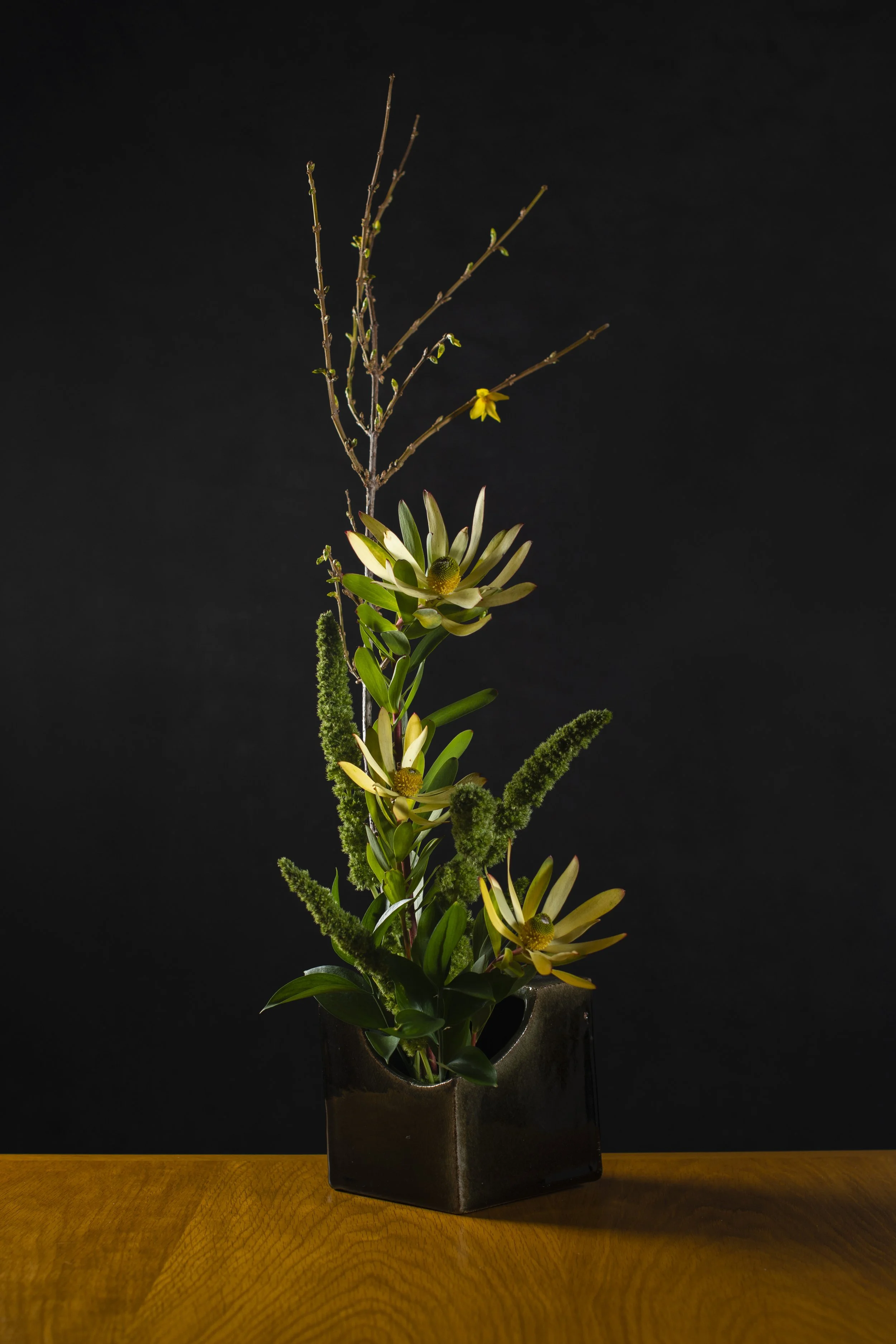Ikebana: Harmony in Bloom
Ikebana flower arrangement
In the heart of Japan's rich cultural tapestry lies a practice that transforms the simple act of arranging flowers into a profound art form. Ikebana, often referred to as "kado" or the "way of flowers," is more than just a decorative arrangement. It's a deeply symbolic journey that harmonizes nature, humanity, and space in a single delicate creation.
Origins of Ikebana
Ikebana's roots trace back to the 6th century when floral offerings were made at Buddhist altars. Over centuries, the practice evolved from simple displays to intricate arrangements reflecting the philosophical and aesthetic principles of various schools.
Philosophy Behind Ikebana
At the core of Ikebana is the principle of capturing the fleeting beauty of nature and expressing it through a harmonious arrangement. Unlike conventional Western floral arrangements, which often focus on the sheer abundance of blooms, Ikebana emphasizes minimalism and the careful selection of elements. Ikebana encapsulates a profound philosophy, mirroring the intricate balance and interconnectedness found in the natural world. Unlike mere floral decoration, Ikebana is a contemplative journey, embodying principles that echo throughout Japanese culture.
Elements of Ikebana
Line (Kami): The concept of line is crucial in Ikebana. Each stem is carefully chosen and placed to create a sense of movement and rhythm within the arrangement. Unlike a mere aesthetic pursuit, Ikebana is a contemplative practice, a meditation with flowers. It reflects the impermanence of life, reminding practitioners of the transient beauty that surrounds us.
Balance (Hikae): Achieving balance is an art in itself. Ikebana strives for harmony between the various elements, considering not just the visual but also the symbolic weight of each flower and stem. It symbolizes the delicate equilibrium we seek in life—an equilibrium between the chaos and serenity, between the material and the spiritual.
Space (Ma): Ikebana embraces the concept of "ma," or the power of negative space. It's not just about arranging flowers; it's about sculpting the space around them. The intentional use of empty spaces fosters a sense of tranquility, inviting contemplation and creating a dialogue between the flowers and the void.
Depth (Shin): Ikebana arrangements often feature different levels of height, creating a three-dimensional effect that adds depth and dimension to the overall composition. The concept of depth in Ikebana goes beyond the physical arrangement. It delves into the emotional and spiritual layers of existence. Ikebana invites us to look beyond the surface, to see the profound beauty that lies beneath.
Connection with the Seasons (Kisetsukan)
Ikebana is a living art form intimately tied to the changing seasons. Practitioners consider the seasonal characteristics of flowers, branches, and foliage, infusing each arrangement with the spirit of the moment. This connection with nature fosters a deep appreciation for the cyclicality of life.
Ikebana in Modern Context
While Ikebana has deep roots in tradition, it continues to evolve. Modern Ikebana artists often blend classical principles with contemporary aesthetics, pushing the boundaries of what is considered traditional. No two visits to Sushi Ii are ever the same. Much like our Omakase dining experiences, our masterfully designed Ikebana arrangements change with the season.
In Ikebana, every stem, every petal, is carefully chosen to convey a story. It is an art form that transcends the physical and engages the soul. Ikebana invites us to slow down, observe the beauty in simplicity, and cultivate a deeper connection with nature. In a world that often rushes past the delicate wonders of the natural world, Ikebana stands as a testament to the enduring power of mindful creation.
